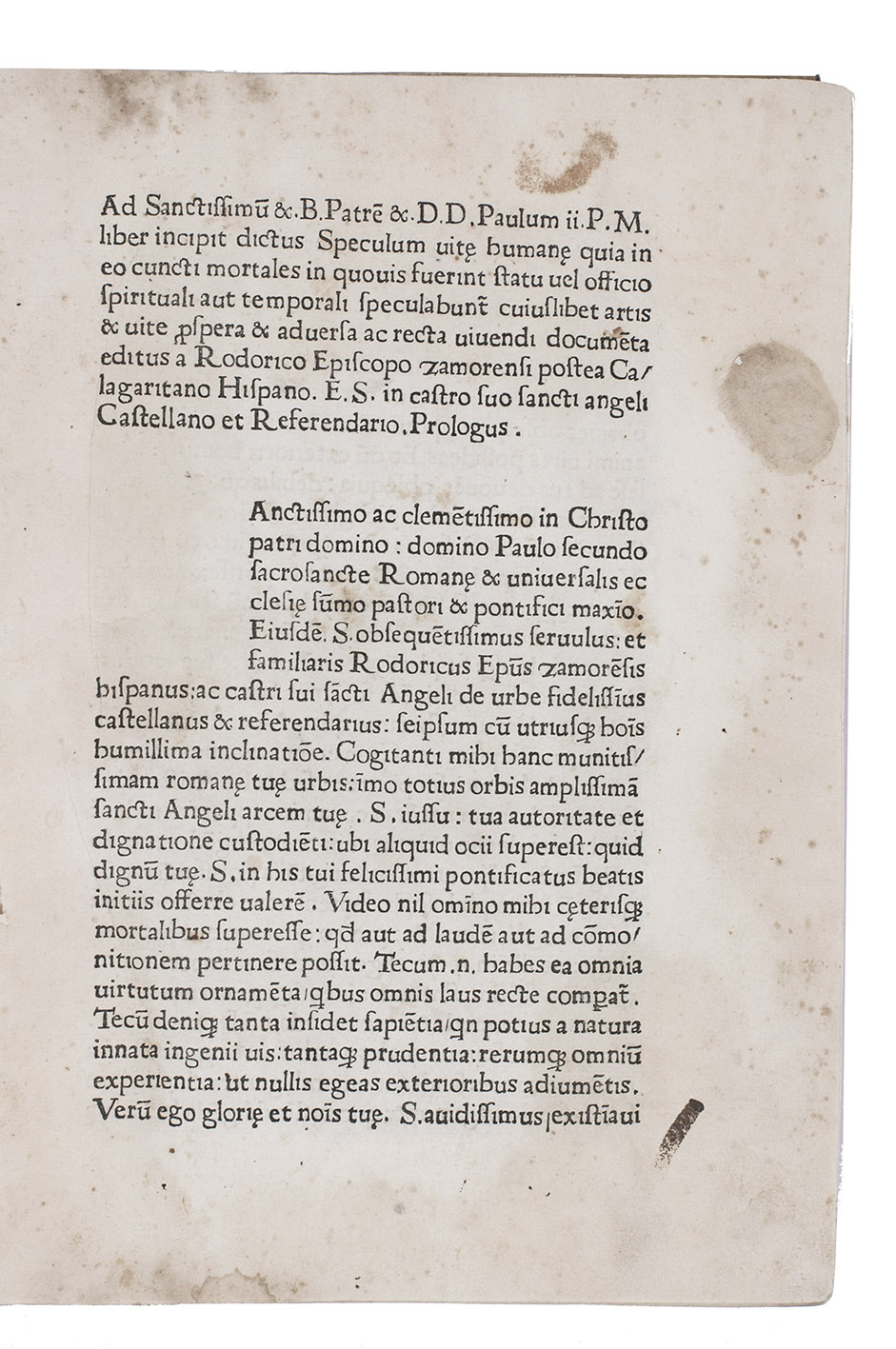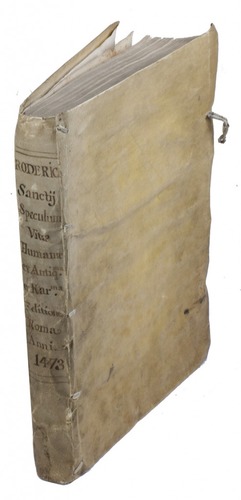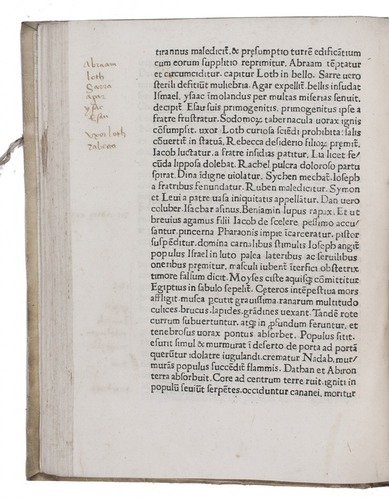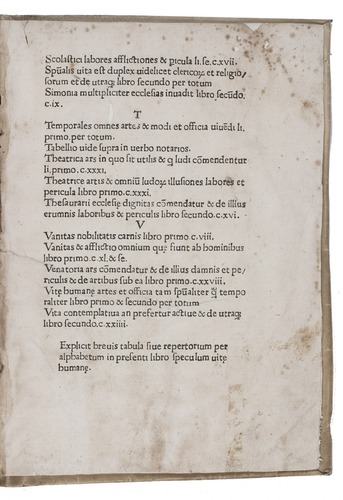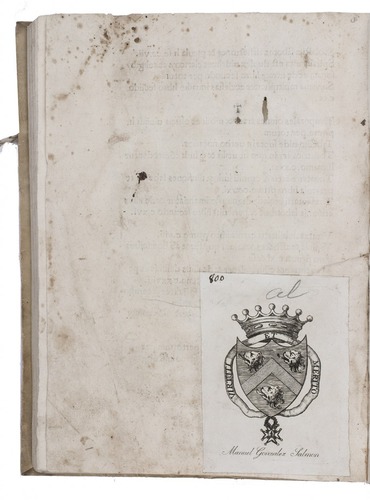SÁNCHEZ DE ARÉVALO, Rodrigo (Rodericus SANCIUS or ZAMORENSIS).
Speculum vit[a]e human[a]e.
Rome, Joannes Philippus de Lignamine, 31 July 1473. Small folio (26.5 x 20 cm). With spaces left for 2 large (6-line) and about 80 small (3-line) initials. Text block 19.5 x 11.5 mm with 31 lines per page. Set in a single roman type throughout (Lignamine 125R). Limp sheepskin parchment (ca. 1740/50). [163] ll.
€ 22,500
Second Rome edition, published in 1473, of a popular philosophical, moral and practical work by Rodrigo Sánchez de Arévalo, bishop of Zamora (1404-1470). Known in English as the Mirror of human life, it is divided into two "books", the first (30 numbered chapters) devoted to secular life and the second (43 numbered chapters) to spiritual life, each dealing with various stages in human development. It discusses the benefits, responsibilities and dangers of various trades and professions, and was intended to help people choose a vocation. This makes it a valuable source for information about numerous occupations in a wide range of social strata.
Lignamine's roman type used for the entire book first appeared in a book with colophon dated 3 August 1470 (ISTC iq00024000), making it one of the very earliest roman types, and it deserves more attention than it has received. Olocco convincingly argues that the earliest truly roman types were based on a style of humanistic manuscript hand that evolved in Padua, where Andrea Mantegna revived classical roman inscriptions in his frescos in the 1450s and where manuscripts took inspiration from classical Roman inscriptions for their capitals and adapted the serif structure of the lowercase to them. Lignamine's type is also set with considerable sophistication (already in its earliest uses), with special characters for abbreviations and with T and V kerned to avoid white gaps in combinations like "To" (without overdoing it), something Jenson appears to have tried only in 1471 and quickly abandoned.
The fore-edge margins contain frequent contemporary manuscript notes in brown ink, often serving as a guide to the content, and occasionally simple contemporary penwork decorations probably by the same hand, drawing attention to short passages in the text. There are also slightly later manuscript notes. Engraved armorial bookplate of Manuel Gonzalez Salmon (1778-1832), Prime Minister of Spain in 1819 and 1826-1832. With some small holes in the last text leaf, a worm hole restored in the fore-edge margin of the first 30 leaves (leaving a small stain), some minor foxing (mostly in the first leaf and last leaf of the text) and a couple small ink smudges. Otherwise in very good condition. Lacking the initial blank leaf. The book still has generous margins, but occasionally a manuscript note has been shaved. The parchment of the binding is wrinkled and part of one fastening is lost. One of the earliest incunabular editions of an important work. BMC IV, pp. 31-32; Goff R220; Hain-Copinger 13943; GW M38496; ISTC ir00220000; Proctor 3391; USTC 991529; for the early history of roman printing types: H. Carter, A view of early typography (1968), pp. 47-49; R. Olocco, The Venetian origins of roman type (2017).
Related Subjects:
